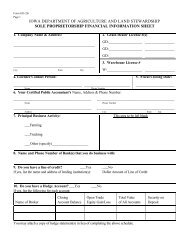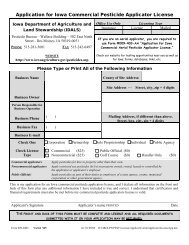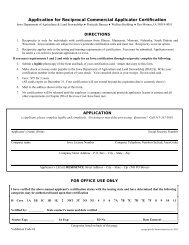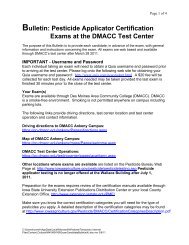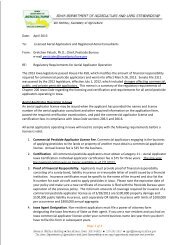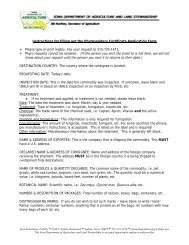Exhibit C: Detailed Background, Work Group Recommendations
Exhibit C: Detailed Background, Work Group Recommendations
Exhibit C: Detailed Background, Work Group Recommendations
You also want an ePaper? Increase the reach of your titles
YUMPU automatically turns print PDFs into web optimized ePapers that Google loves.
FLOOD CONTROL STRUCTURES (LEVEES):<br />
Flood control levees have been used for decades to reduce damage caused by flooding. However, levees<br />
do not eliminate the risks of flood damage. Levees have failed or been over‐topped in the past. When<br />
this happens the sudden rush of flood waters can cause more damage than floods in areas without<br />
levees. Still, when designed, built and maintained properly levees are effective tools for managing<br />
flooding.<br />
The Army Corps of Engineers has developed a comprehensive plan for controlling flooding on the upper<br />
Mississippi River which contains many alternatives. The report does not endorse any of the alternatives<br />
and congress has not appropriated funds to implement the plan. An existing levee system on the lower<br />
portions of the Mississippi River (below New Madrid, Missouri) was built with federal funds some years<br />
ago and financial support for maintenance continues today. Even without federal funding levee districts<br />
and communities in Iowa could use the plan to improve flood protection for their constituents. There is<br />
substantial value in developing local flood protection plans as part of a larger planning effort.<br />
♦ Recommendation #4: Areas on the landward side of a flood control levee recognized by the<br />
Federal Emergency Management Agency as protecting against the 0.2% flood should not be<br />
considered as in the 0.2% floodplain and should not be subject to the regulations for the 0.2%<br />
flood plain.<br />
♦ Recommendation #5: Flood control levees should primarily be used to protect areas with existing<br />
development if there are no practical alternatives for mitigating damage from floods.<br />
♦ Recommendation #6: The governor should support and endorse Alternative H in the “Upper<br />
Mississippi River Comprehensive Plan ‐ Final Report June 2008 (Revised Aug 14, 2008)” prepared<br />
by the Army Corps of Engineers. This alternative would improve the existing levee system to<br />
provide protection from the 0.2% flood along the Mississippi River (not the tributaries). [Note: The<br />
Army Corps of Engineers employees participating in the work group did not endorse any<br />
alternative.]<br />
The Federal Emergency Management agency is requiring flood control levees shown on their official<br />
maps to be certified in the next two years before the levees can be recognized as protecting against the<br />
floods for which they were designed. The certification process can be expensive and communities may<br />
not be able to bear that cost alone.<br />
♦ Recommendation #7: The state should create a grant program to help entities bear the cost of<br />
certifying existing flood control levees.<br />
♦ Recommendation #8: The state should create a grant program to assist entities with improving<br />
existing levees as one way to meet the new 0.2% flood regulations.<br />
PLANNING:<br />
The best flood plain management planning is done by the local community whether it be a city, county,<br />
watershed or river basin. Local officials such as zoning and building administrators, community planners<br />
and emergency management service providers will have the bulk of the responsibility for implementing<br />
these plans. Local flood plain management plans are the key to reducing exposure to flood damage.<br />
56



![Ch 44, p.1 Agriculture and Land Stewardship[21] IAC 4/23/08 - Iowa ...](https://img.yumpu.com/49992480/1/171x260/ch-44-p1-agriculture-and-land-stewardship21-iac-4-23-08-iowa-.jpg?quality=85)



